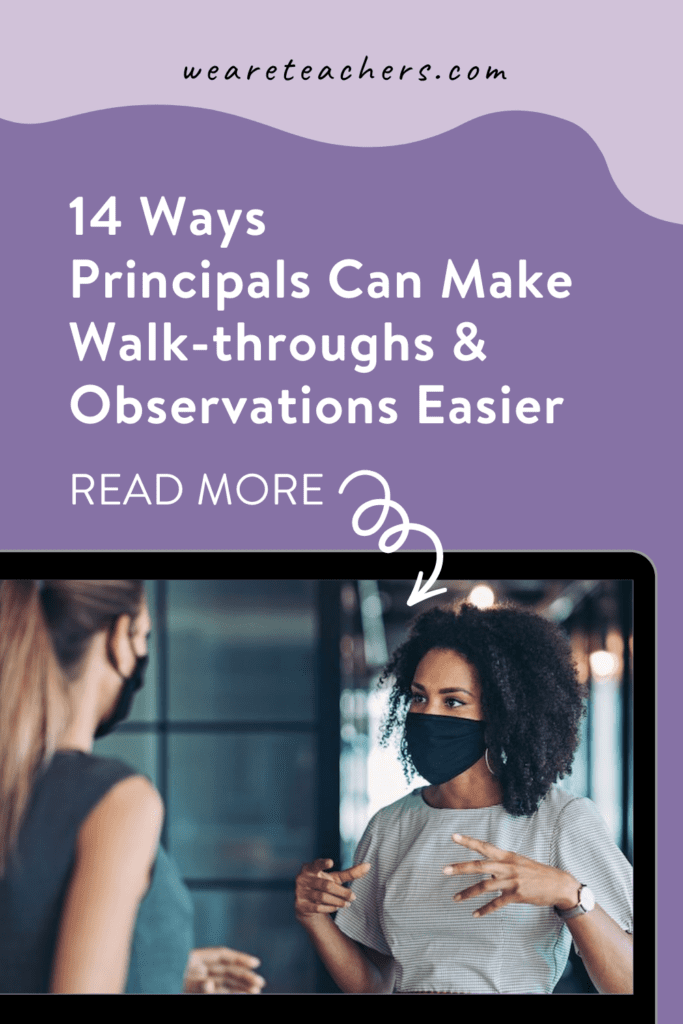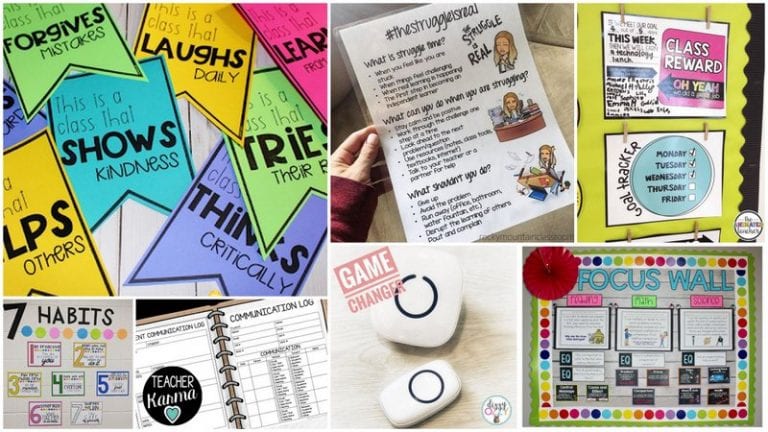Administrative classroom observation walk-throughs—so fundamental to supporting the educational process—can be nerve-wracking for teachers, even veteran ones. Add in teaching and leading through a pandemic, and stress levels can go through the roof. Here are 14 moves for administrators that make it a constructive process.
1. Share the visitation process and its overarching goals in advance.
A well-thought-out process that obviously supports strong teaching and student learning alike should be transparently communicated to teachers at the start of each school year. And during times such as we have recently experienced with COVID, when the conditions of instructions were radically altered, modifications may need to be considered.
2. Share the criteria and process for evaluation in advance.
This allows teachers to understand expectations and that they are being evenhandedly applied to all teachers. The expectations embedded in the criteria for classroom visits shouldn’t seem like breaking news to teachers at the time when they receive their feedback.
3. Keep an even-steven approach.
Visit all teachers as close to the same number of times as possible to reinforce the probity of the evaluation process. While some variance is to be expected where follow-up visits are needed, there should be clear rules of process.
[contextly_sidebar id=”olmQzGEd9BrgORlSydmy6skR5KyWiKBp”]
4. Aim for brief, multiple visits.
Kim Marshall, who heads up The Marshall Memo, has suggested that classroom visits should be brief and multiple—brief to allow administrators to keep to their visitation schedules and multiple so that a range of classes is seen and no outlier sample leads to mischaracterization of the teacher’s work overall. I tend to visit teachers once or twice for ten minutes. Knowing that that teacher will also be visited by a department head multiple times. Short frequent visits also disrupt the shock of one long, intrusive visit and increase the likelihood that teachers will grow accustomed to visitors in the classroom.
5. Don’t set a date.
Visits to classrooms should not be arranged in advance. There should not be a signal to be “on” and make special preparations. However, teachers should feel free to invite administrators to see special lessons or events in their classrooms. That’s a date you can set!
6. Keep a low profile.
Entering a classroom invariably causes a disruption that we are wise to minimize. Quickly locate the nearest, best spot for viewing and take notes unobtrusively. Throwing open a laptop and typing loudly, answering calls and texts, or writing on a legal pad may seem aggressive, for example. You are entering the teacher’s domain. Avoiding seeming like a deputy chief inspector visiting a provincial city is a good notion. Consider using a little notebook or taking notes on your phone.
7. Individualize note-taking for observation visits.
Checklist rubrics are oftentimes integral to an institution’s evaluation process. A checklist, though, may only prompt certain kinds of noticings. Consider making room in your note-taking process to notice something special or singular about the teaching. It can be wonderful to reflect back to teachers that you “see” them when you give feedback or write a thank you note.
Some things to look for:
- Evidence of appropriate goals and clear, intended outcomes.
- Solid content knowledge.
- Strong classroom routines and structures.
- Pedagogy and content appropriate for the students in the classroom.
- Healthy classroom culture, with respectful exchanges in discussion and during group work.
- Students generally at ease.
- The teacher creates moments to look at the whole class, notices individuals, and takes action if someone is struggling.
- Well-prepared materials: PowerPoints and handouts should be neat, proofread, and not overcrowded with text.
- The classroom is tidy, supplies and materials are in good shape, and signs and posters on the walls are appealing and inclusive.
8. Let teachers know you can exit stage left.
Sometimes, a teacher needs to have a little talk with a class—in most cases, this is no time for an audience. Do be willing to be waved away if it is a bad time. Likewise, do be sure to get back in that classroom as soon as possible to confirm that all is well and that a floundering teacher is not avoiding visitation.
9. Pay attention to student reactions to teachers.
Are they focused and busily engaged, wrapped up in the lesson, barely noticing your presence? That’s a good sign. Are they looking at you, trying to make eye contact as if trying to signal to you that something odd is going on? Are you getting “rescue us” signals? If so, can you identify a possible source of trouble? Try to think from the students’ perspective. Is the teacher reading the room to make sure students understand? Does the teacher call on any one group, boys or girls, for example, and seem to ignore the other?
10. Notice how students are responding to the instruction.
After the teacher demonstration part of the lesson, try to get a sense of how students are connecting to the instruction and apply it in small group or individual work. Do they know what they are supposed to be doing? Are there any students plainly languishing or confused that the teacher does not notice? Are students clearly following along within classroom rituals and habits? If students are on laptops, are they on task (or on social media)?
11. Make it clear that a growth mindset is for everyone.
Reinforce the idea that the evaluation process is there to support teachers’ professional growth. We can all improve in our work—a growth mindset isn’t just for students. Adults, too, need feedback in order to grow. Always build your feedback on a teacher’s strengths before you address areas in need of attention.
12. Give timely feedback.
Many teachers are eager to hear your insights as quickly as possible after the visit. Even if you have some concerns, show some appreciation first. Asking the teacher how they thought it went can give you footholds in discussion and foster professional ownership over their instruction. Tell teachers in simple terms if you see something wrong. Give teachers solutions if you know what they can change. If you have been clear about a change that must happen, it is wise to follow up with an email reiterating that point. And returning to the classroom after a reasonable interval will allow you to check on progress. All teachers encounter challenges—and over the course of their career, these will vary. Sharing an anecdote from your own classroom experiences with a demoralized teacher can be helpful and important.
13. Ground the discussion in the criteria for evaluation
Using some of the language of the criteria for evaluation keeps things clear and simple.
14. Foster collegiality through visits rather than fueling an “us/them” dynamic.
Teachers have been through a lot in recent years. Hybrid instruction, cohort closures, controversy over instruction—the field of teaching has been fraught. Most teachers have fought valiantly on, trying to preserve excellence in the classroom, even as they became essential workers trying to keep track of hand-sanitizing. Smile and wave as you enter and leave the room. Observe appreciatively. Have a follow-up conversation if at all possible, and if not, write a thank-you note.Think of ways to help the teacher succeed.
The bench of the teaching profession is not deep right now. As administrators, we need to do our part to support the profession and the art of teaching. And, if possible, communicate fellow-feeling with them as well as your enthusiasm for teaching. These classroom visits and collegial ongoing dialogue can be powerful agents for change. Let’s keep our talented teachers in the building and give them the support they need to thrive.


